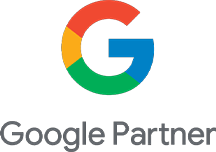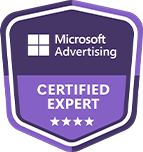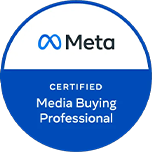Search Engine Optimization or SEO isn’t just a marketing buzzword; it’s something that has become the bedrock of growth for major businesses across the globe and cosmetic surgery practices as well. From mini-facelift consultations to mommy makeover inquiries, patients start their search online. Where your practice ranks on Google can often decide whether your phones or your competitor’s ring first.
Today’s patient journey is digital-first. Before booking a consultation, people research procedures, compare providers, and read reviews, all from their smartphones. That means ranking for the right keywords doesn’t just boost page views. It can be what gets you new patients.
Hi, I’m Bob Ottaway, Director of Cosmetic Surgery Marketers and a digital marketer with over 20 years of industry experience. In this article, you’ll get an introduction to SEO, some tips on beating competitors in search results and breakdown of the most valuable search terms cosmetic surgeons should pursue in their SEO strategies.
How Patients Actually Search for Cosmetic Procedures
Google Is the First Stop for Cosmetic Goals
Search behavior in the cosmetic surgery space starts with personal concern or desire. A person may look in the mirror and imagine a change, smaller nose, fuller lips, tighter midsection. What comes next?
A search on Google.
This isn’t sporadic behavior; it’s consistent across age groups and geographies. In fact, “95 percent of patients considering a cosmetic procedure had consulted an online source,” according to research from PubMed Central.
Whether someone types “how to get rid of under-eye bags” or “top mini-facelift surgeon in Detroit,” the search shows intent. The language used in search queries often mirrors how people speak in real life, especially in mobile searches. Searchers will also frequently use phrases like “near me,” “best,” “affordable,” and “reviews”.
High-Value Keywords Reflect Patient Intent
You can learn a lot about where a potential patient is in their buying process from their keyword phrasing. A search like “mini-facelift recovery time” signals an early-stage awareness. Compare that to “best facelift surgeon in Atlanta.” This type of language is called “decision-stage language.” The latter aligns with buyer-ready behavior and should be a top priority in keyword strategy.
Here’s how different keyword types map to patient intent:
- Informational: “what is liposuction,” or “how long does Botox last” (Early research phase.)
- Comparative: “CoolSculpting vs tummy tuck” or “facelift vs fillers” (Middle consideration stage.)
- Transactional: “top facelift surgeon in Michigan” or “breast implant specialist near me” (Ready to book.)
Synchronizing SEO with Real Search Behavior
Ranking on Google means speaking the same language as potential patients. When a website’s content directly reflects user queries, search engines respond. Pages optimized with high-intent phrases draw clicks from users who already know what they want and are seeking medical offices that can provide it.
Surgeons can’t rely solely on procedure names. Patients search with goals, fears, and comparisons in mind. For instance, someone curious about skin tightening might not know to search using an industry specific phrase like Morpheus8 or Ultherapy. They might be more likely to type something like “best nonsurgical skin tightening for jawline”. The content must fill in that knowledge gap while naturally incorporating those exact queries.
Want to test how people search? Head to Google’s search bar and start typing a phrase like “Brazilian butt lift.” Notice the autosuggestions? Those instant prompts reflect real user behavior and they evolve constantly. Use these related phrases strategically in your web content!
Keyword Phrases That Drive Patients: Where Cosmetic Surgeons Should Focus
Service-Based Keywords: Where High-Intent Patients Start Their Journey
Targeting specific procedures with precision draws in users ready to take the next step. These aren’t casual browsers, they’re decision-makers. Here’s where the greatest opportunity lies for cosmetic surgery practices.
Facelift Surgery: Use variations like deep plane facelift, mini-facelift, and mid-face lift. Include recovery timeline content and age-specific targeting (e.g., “facelift in your 40s”).
Cosmetic Surgery Procedures: Include umbrella terms like cosmetic surgery, aesthetic surgery, and cosmetic surgery treatments. Use them as category headers and cornerstone page titles.
Botox and Fillers: Try to rank for procedure-specific terms like Botox or Doxxify injections, lip fillers, dermal fillers for nasolabial folds, and Juvederm vs Botox. Break down pages by product brand and treatment area.
Nose job: Capture variations such as rhinoplasty, nose reshaping surgery, open rhinoplasty, and ethnic rhinoplasty. Incorporate post-op guides and animation visuals.
Breast Augmentation: Go beyond the basics. Target saline vs silicone implants, breast implant revision, and breast augmentation with fat transfer. Position content for both first-timers and revision candidates.
Liposuction: Target keyword strings such as liposuction for abdomen, 360 lipo, and liposuction vs tummy tuck comparison. Add experience-oriented terms like, what to expect after liposuction.
Tummy Tuck: Optimize for terms like abdominoplasty, mini tummy tuck, tummy tuck post-pregnancy, and extended tummy tuck results. Anchor these with dramatic before-and-after images.
Skin Rejuvenation Treatments: Incorporate microneedling, laser skin resurfacing, chemical peel for acne scars, and skin tightening without surgery. Use seasonal keywords such as winter skin treatments.
Nonsurgical Cosmetic Treatments: Build pages around liquid facelift, nonsurgical nose job, or non-invasive blepharoplasty. Patients often search for minimal downtime options. Add details about recovery time as well.
Minimally Invasive Procedures: Include endoscopic brow lift, thread lift, and BodyTite or FaceTite. These keywords align with patients seeking subtle results with less recovery time.
Build standalone landing pages for each high-volume service. Include before-and-after galleries, treatment-specific FAQs, and video walkthroughs of the consultation process to keep users engaged and build confidence in your services.
Need some extra help coming up with keywords? Try putting your website URL into WordSteam’s free keyword tool.
Location-Based Keywords: Compete Locally, Rank Globally
Search engines prioritize relevance and proximity. Patients rarely scroll past page one of Google search results, and in fact, according to Backlink.io, in a dataset of 4 million searches, “only .63% of Google searchers clicked on something from the second page.” Here’s how to stay above that fold.
Cosmetic Surgeon in [City Name]: Use this phrase as the title, or H1, of your page. Build pages for each city or neighborhood within your reach. Talk about procedures popular in that area or patient testimonials from clients local to those areas.
Cosmetic Surgeon Near Me: A default search term on mobile. Include it in H2 titles, meta descriptions, and image alt text on your homepage and service pages.
Best Cosmetic Surgeon Near Me: Patients often add “best” or “top-rated” to their search queries. Populate your site with keywords like top cosmetic surgeon in Pasadena or award-winning facelift specialist in Detroit.
[Procedure] in [City Name]: Combine service and location. Facelift in Scottsdale, Botox in Miami Beach, tummy tuck in Troy, Michigan. Localize testimonials, recovery guidance, and even pricing estimates to boost relevance.
Board Certified Cosmetic Surgeon in [Location]: Credentials matter. Searchers filter providers based on qualifications, so this phrase can go a long way in building your credibility with prospective patients.
Additionally to your SEO strategy, ensure your Google Business Profile is fully optimized. Add service categories, procedure imagery, and updated NAP (Name, Address, Phone). Embed the Google Map widget directly on your website’s contact page to reinforce local signals.
Outrank Competing Cosmetic Surgeons on Google
Start with Local Competitor Research
Before making any serious SEO efforts, find out who already dominates the local market. Run a search for procedures you offer, like “facelift Royal Oak” or “breast augmentation Miami,” and take note of the top-ranking practices.
Look closely at the language they use; you can use tools like SEO-Extention to see their meta descriptions, the types of content they’ve published, and the structure of their service pages. This sets a benchmark for what Google considers relevant in your area and a guiding line for your future content.
Use geo-specific keyword modifiers combined with your primary services to refine your keyword strategy and find potential gaps in your competitions. For example, compare “facelift NYC” against “facelift Upper East Side” to see if top ranking pages begin to change at the neighborhood level. Small shifts in geography can reveal gaps your competitors haven’t yet covered.
Use SEO Tools to Find Keyword Gaps
Leverage platforms like SEMrush or Ahrefs to run a side-by-side domain comparison between your website and your top competitors. Both tools provide keyword gap reports that reveal:
- Keywords your competitors rank for, but you don’t
- Keywords you both rank for, but where they outrank you in position
- Emerging keywords in your vertical that have seen recent growth in search volume
From this data, extract terms that match your procedures, geographic focus, and patient pain points. Build content around these themes to reclaim lost ground and attract untapped audiences.
Create Content That Surpasses Industry Standards
Publishing longer content packed with value signals to Google that your page is a more comprehensive resource. Aim for a word count that exceeds the average of your top 5 competitors.
Developing a thorough 1,400-word guide that walks patients through pre-op to long-term care, reinforced with photos, an embedded video, and downloadable prep checklists will have a hugely positive impact on your entire website’s SEO presence.
Publish custom diagrams to explain procedures, create video walkthroughs with your lead surgeon, and showcase high-resolution before-and-after photos. Interactive elements like patient quizzes or pricing estimators also reduce bounce rate and improve average time on page, both strong SEO signals.
Strengthen E-E-A-T with Real Proof
Google’s ranking algorithm evaluates Experience, Expertise, Authoritativeness, and Trustworthiness using both on-page and off-page cues. Build E-E-A-T by featuring:
- Physician bios with credentials, years of practice, and education
- Patient testimonials with names, photos, and procedure details
- Third-party recognitions or board certifications
- Detailed case studies for procedures like mommy makeovers or facial rejuvenation
Every page should reinforce that your practice isn’t just offering cosmetic procedures; you are a leader in their field with a track record to prove it.
Avoid generic filler content. Each paragraph should reflect lived expertise and documented success.
Embed authentic before-and-after galleries optimized for SEO. Include alt text with the procedure name and city (e.g., “Tummy tuck before and after San Diego”) to increase visibility in image search results. Pair each gallery with a personal story to deepen engagement.
Outranking other cosmetic surgeons on Google won’t come from copying their strategies; it comes from exceeding them in quality and relevance. Every update to your website must be targeted, metrics-driven, and anchored in your authentic patient results.
Conclusion: Rank Where It Matters Most
In today’s digital landscape, ranking well on Google isn’t optional for cosmetic surgeons; it’s essential. Patients are no longer flipping through magazines or relying solely on word of mouth. They’re searching with purpose, comparing providers, and making decisions based on what they find online. If your practice doesn’t appear at the top of those results with the right keywords, someone else’s will.
The path to better visibility starts with understanding how patients search, what they search for, and how intent shifts from curiosity to booking. Whether it’s location-based queries like “best facelift surgeon near me” or high-intent service terms like “mini-facelift cost,” every keyword you target should align with real patient behavior and your practice’s strengths. Invest in content that goes beyond the basics. You want content that informs, engages, and proves your expertise.
By focusing your SEO strategy on decision-stage language, local relevance, and high-value procedures, you don’t just rank, you convert.






